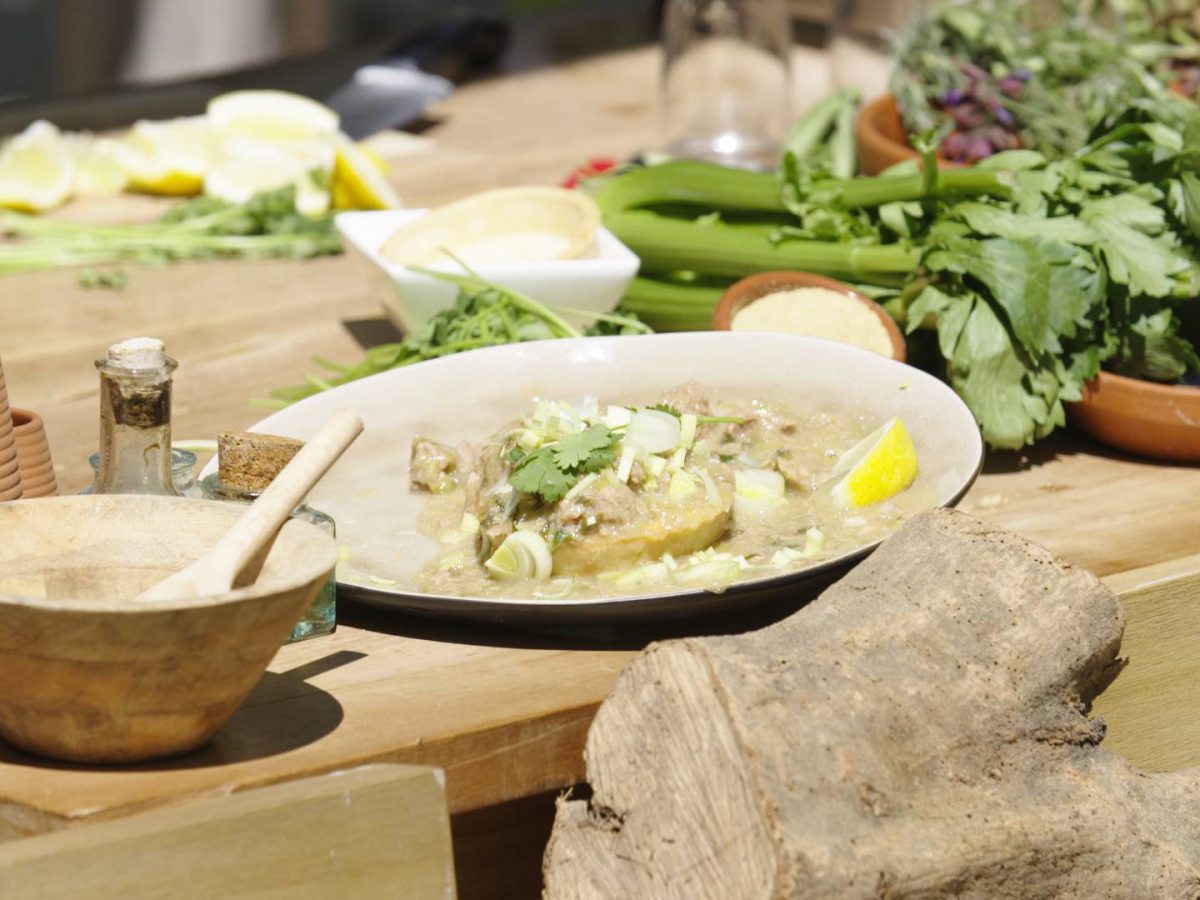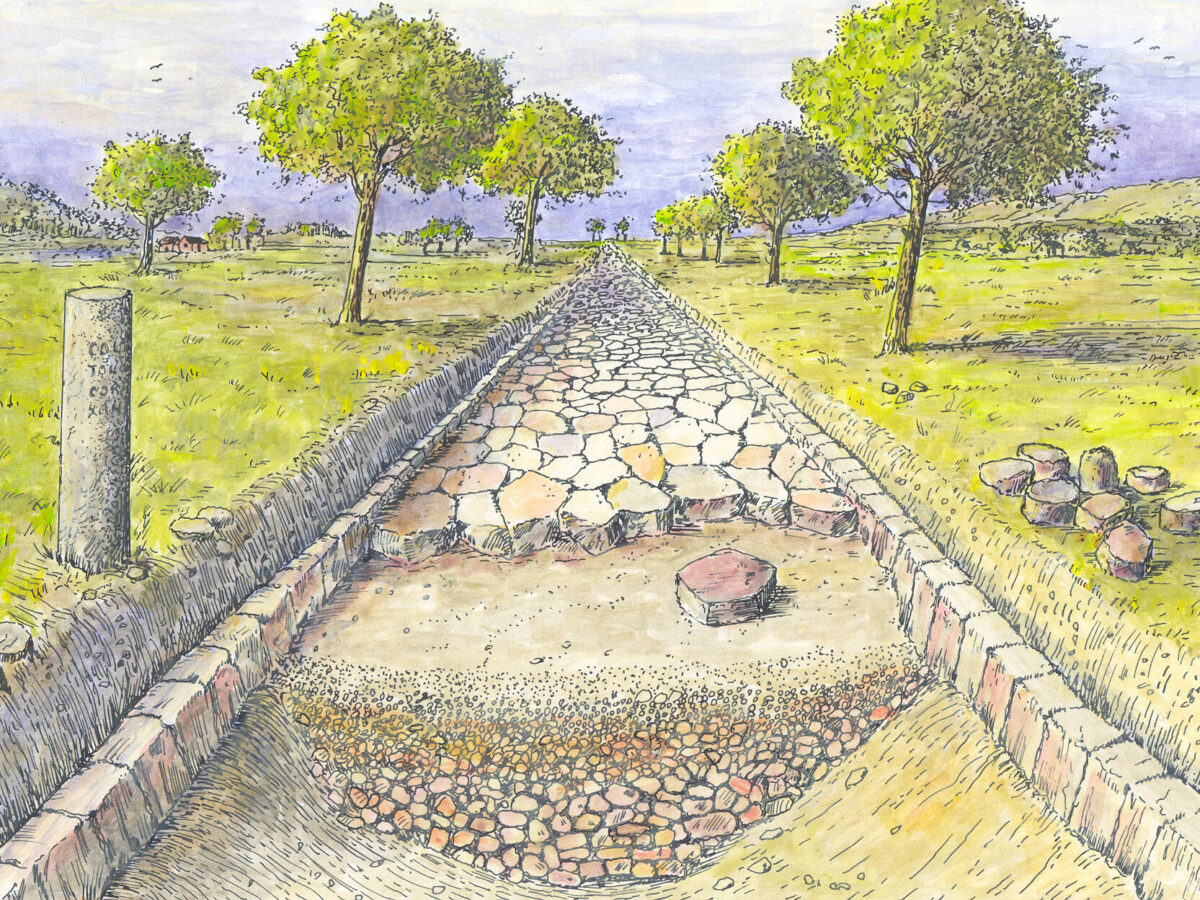L1 recipe – Pork Ragout with Apple
Author: Peter – Head Chef at De Luciushof / De Twee Gezusters
Photography: Via Belgica

The Romans introduced the use of herbs in our local kitchen. This brought many new flavours. Using herbs in different combinations made Roman cooking very exciting. In this stew there are two typical Roman flavourings: garum – a fermented fish sauce – and asafoetida. Asafoetida, also called devil’s dung, gives the dish a strong, garlic-like taste.
4 Servings:
- 500 g minced pork
- 500 g pork (in pieces)
- 2 tbsp breadcrumbs
- 1 egg
- 3 tbsp honey
- 1 bay leaf
- 8 peppercorns
- 1 stick celery
- 1 glass white wine
- 3 tbsp white wine vinegar
- 2 tbsp olive oil
- 2 tbsp garum (fish sauce)
- 1 large leek
- 2 tbsp chopped coriander leaves
- 2 Granny Smith apples
- 2 tsp ground cumin
- 1 tbsp chopped mint leaves
- ½ tsp asafoetida powder
- 6 pastry shells (vol-au-vent)
- 6 slices of lemon
- Some cornstarch (optional, to thicken)
Preparation
Mix the minced pork with the egg and breadcrumbs. Make small meatballs. Put the pork pieces in a pan with peppercorns, celery, bay leaf and 1 tbsp honey. Add water until the meat is almost covered. Cook gently for 10 minutes. Remove the fat foam on top. Add the rest of the honey, the wine, vinegar, oil and garum. Bring to the boil.
Add the meatballs, leek (cut in thin rings), coriander leaves, apples (in small pieces), mint and asafoetida.
Let everything simmer gently for about 1 hour, until the pork is tender but not dry. Take out the celery and bay leaf. If needed, thicken the sauce with a little cornstarch. Warm the pastry shells in the oven for 5 minutes at 175 °C. Put the warm pastry shells in the middle of six plates. Fill with the ragout. Garnish with lemon slices and a coriander leaf.

